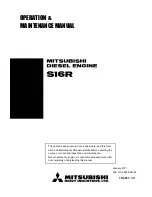
Not
for
Reproduction
Storage
Storing for Off-Season
At the end of the season, or whenever the unit will be stored for
30 days or more, follow the storage checklist below.
WARNING
Gasoline is highly flammable and its vapors are explosive.
Fumes may travel to a distant ignition source and an explosion
and/or fire may result.
• If there is fuel in the tank, do not store the unit indoors or
in a poorly ventilated area where fumes could reach
sparks, open flames, pilot lights, heat, and other ignition
sources.
Engine:
Fuel can become stale when stored more than 30 days. Stale
fuel can cause acids and gum deposits to form in the fuel system
and the carburetor. To keep fuel fresh, add Briggs & Stratton
Advanced Formula Fuel Treatment and Stabilizer.
• There is no need to drain the fuel from the engine if a
stabilzer is added according to instructions. Run the engine
for 2 minutes to circulate the stabilzer throughout the fuel
system. If no stabilizer is added, the fuel must be drained
from the engine into an approved container. Then run the
engine until it stops from lack of fuel.
• While the engine is still warm, change the oil. See
Changing
the Engine Oil.
Snowthrower:
• Thoroughly clean the unit and ensure all nuts, bolts, and
screws are securely fastened.
• Inspect all visible moving parts for damage, breakage, and
wear. Replace if necessary.
• Lubricate the control lever linkages, chute and deflector,
auger assembly, and drive wheel axles. See
Maintenance
and Adjustments.
• For any rusted or chipped paint surfaces, sand lightly and
apply touch-up paint.
• For unpainted or bare metal surfaces, apply a rust
preventative product.
• Store the unit indoors and cover it. If stored outdoors, cover
it with a heavy tarpaulin.
Returning the unit to Service:
• Have authorized service dealer perform annual maintenance
tasks. See
Maintenance Schedule.
• Check the engine oil level and add oil, if necessary.
• Fill the fuel tank with a fresh, clean fuel.
• Check tire pressures.
• Ensure all guards, shields, and covers are in place. Ensure
all fasteners are tight.
• Check the auger and impeller control, and the traction drive
control.
19
















































